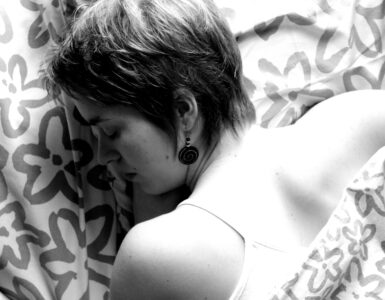There are many forms of arthritis, the most common of which is osteoarthritis. An estimated 32.5 million adults in the U.S. suffer from osteoarthritis, according to the CDC (Centers for Disease Control and Prevention). So, what are osteoarthritis causes and symptoms and how does it impact people?
Affects Many Older People
Osteoarthritis is the most common form of arthritis among older people, and it is one of the most frequent causes of physical disability among older adults. The disease affects both men and women. Before age 45, osteoarthritis is more common in men than in women. After age 45, osteoarthritis is more common in women. It is estimated that 33.6% (12.4 million) of individuals aged 65 and older are affected by the disease.
Osteoarthritis occurs when cartilage, the tissue that cushions the ends of the bones within the joints, breaks down and wears away. In some cases, all the cartilage may wear away, leaving bones that rub up against each other.
Joint Stiffness and Pain
Symptoms range from stiffness and mild pain that comes and goes to severe joint pain. Osteoarthritis affects hands, low back, neck, and weight-bearing joints such as knees, hips, and feet. Osteoarthritis affects just joints, not internal organs.
Hands – Osteoarthritis Causes and Symptoms
Osteoarthritis of the hands seems to run in families. If your mother or grandmother has or had osteoarthritis in their hands, you’re at greater-than-average risk of having it too. Women are more likely than men to have osteoarthritis in the hands. For most women, it develops after menopause.
When osteoarthritis involves the hands, small, bony knobs may appear on the end joints (those closest to the nails) of the fingers. They are called Heberden’s (HEBerr-denz) nodes. Similar knobs, called Bouchard’s (boo-SHARDZ) nodes, can appear on the middle joints of the fingers. Fingers can become enlarged and gnarled, and they may ache or be stiff and numb. The base of the thumb joint also is commonly affected by osteoarthritis.
Knees
The knees are among the joints most affected by osteoarthritis. Symptoms of knee osteoarthritis include stiffness, swelling, and pain, which make it hard to walk, climb, and get in and out of chairs and bathtubs. Osteoarthritis in the knees can lead to disability.
Hips – Osteoarthritis Causes and Symptoms
The hips are also common sites of osteoarthritis. As with knee osteoarthritis, symptoms of hip osteoarthritis include pain and stiffness of the joint itself. But sometimes pain is felt in the groin, inner thigh, buttocks, or even the knees. Osteoarthritis of the hip may limit moving and bending, making daily activities such as dressing and putting on shoes a challenge.
Spine
Osteoarthritis of the spine may show up as stiffness and pain in the neck or lower back. In some cases, arthritis-related changes in the spine can cause pressure on the nerves where they exit the spinal column, resulting in weakness, tingling, or numbness of the arms and legs. In severe cases, this can even affect bladder and bowel function.
Living With Osteoarthritis – Osteoarthritis Causes and Symptoms
As mentioned, osteoarthritis can lead to disability, so it is important to learn how to live with the disease and manage it to improve your quality of life. There are number of ways to do this. The first is to start with your doctor. Your doctor should be able to recommend a treatment plan that may or may not include medication, depending on the severity of your pain.
That treatment plan may include therapy and self-management strategies that can help people with arthritis and other chronic conditions. There are self-management classes for people with chronic conditions. You can find some recommendations here.
Other ways to live with osteoarthritis include
- Moderate physical activity. Check your local area for activity programs related to arthritis and other chronic conditions that may be offered at the community centers and more.
- Weight loss. If you are overweight, that places increased pressure on the joints and may accelerate the deterioration of cartilage. Consult with a dietician about how you can reach a healthy weight.
- Avoid activities that can result in joint injuries. What might that be? Anything that places a great deal of stress on your joints, resulting in twists or strains.




Add comment